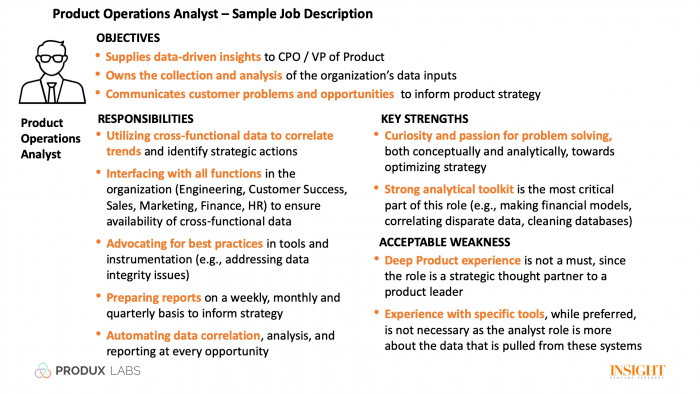Hiring a Product Operations Manager? Read this First.

Let’s assume you understand the value of Product Operations and what it can bring to your organization.
Whether you’re at the startup, growth or enterprise stage, you understand that Product Operations is the fuel for winning strategies and provides the data inputs that connect software development to business outcomes. When your leadership team asks for data, you want to provide the data that they need to make product decisions, not just the data they ask for. You’re efficiency focused. You see how to deliver value faster to customers by shortening feedback loops and sharing knowledge within the org. You’re all in on Product Operations.
Assuming that you’ve allocated—or are considering—a 2020 headcount for Product Operations, how do you find the right person? What are the right skills and experiences for this hire? How do you source candidates?
You could just search “Product Operations” on LinkedIn, but the results will show that 5,700+ people have Product Operations in their title. In fact, Product Operations as a listed LinkedIn skill has grown 80% YOY. Although, once you start looking through the profiles, you’ll quickly notice that there are many flavors of Product Operations. Some roles veer towards data analysis; others are more integrations and process focused. Sometimes you’ll see a blend of those skills.
How do you know which skill sets are right for you and your organization? Can you find the unicorn who has ALL of the skills - data analysis, integrations and process management?
2 is better than 1
In my experience as a product leader, I think these skillsets require two different roles. As the former VP of Product at a SaaS enterprise company, we created a product analysis team. Our team (1 manager and 2 junior analysts) discovered revenue-driving, churn-reducing insights through data analysis. The team could wrangle revenue inputs from Finance, win/loss/churn stats from Sales, and user engagement data to tell a cogent story about a customer problem. Then the Product Team and analysts would collaborate on potential hypotheses to test. The analysts would help us understand risk associated with our hypotheses and validation experiments, including potential revenue increases or losses. We had one big win soon after the team was formed. Based on insights the team unearthed, we created a beta product that generated 7 figures in the first 12 months.
For our Product Data Analyst roles, we looked for people with past consulting and data analysis background. Sometimes those people are new to product management, which is totally okay. This person is a master of Excel, using formulas and creating pivot tables in their sleep. Someone who loves finding unseen nuggets of info that can lead to a bigger discovery. Job titles to attract the right candidates include “Product Operations Analyst” or “Product Data Analyst.”
Here's a sample job description:

Were my analysis rockstars just as skilled at streamlining product processes? No.
A "Product Operations Manager" requires someone who deeply understands what good operations looks like. This person knows the best development and insight tools. They are familiar with how product gets built. This could be a mid-level product manager who really loves creating efficiencies and more streamlined processes. A chief of staff at a tech org could also be a potential fit. Ideally your process person has coached/mentored more junior team members, experienced world-class product best practices and rituals, and loves improving refining and them. The process operations person has a high EQ. They know how to navigate in a changing business landscape and use influence to get what they need from various teams across a highly-matrixed organization. They’re also a resource to help coach team members in agile and lean methodologies.

Which role gets hired first?
So if you only have one headcount, which one should you hire first? It really depends on your priorities. One role will focus on a steady cadence of strategy-informing data. The other role brings order and efficiency in the inputs towards successful product development.
If all things are equally important, I recommend hiring the product data analyst first. Having quality data to make better decisions is essential. Possible outputs of the analyst role (like researching BI tools) can help set up some pillars for the process role. Give it 3-6 months to get your product analyst up to speed and show the leadership team some solid wins. Once you’ve established the analyst as a truly value-add hire, you can turn your attention to making the case to hire a product ops process manager.
Reporting structures
My recommendation would be to have your first Product Operations hire —the production data analyst —report to the head of product. When you eventually add the director-level overall process person, that person will report to the head of product. Your Product Operation Data Analyst, an individual contributor, will then will report into the process director.
In the end, you’ll have the best understanding of which role your team and org need first. To share a different point of view, I spoke to Calendly’s Oji Adezue about standing up his team’s first product operations role and which role he’s hiring first.












